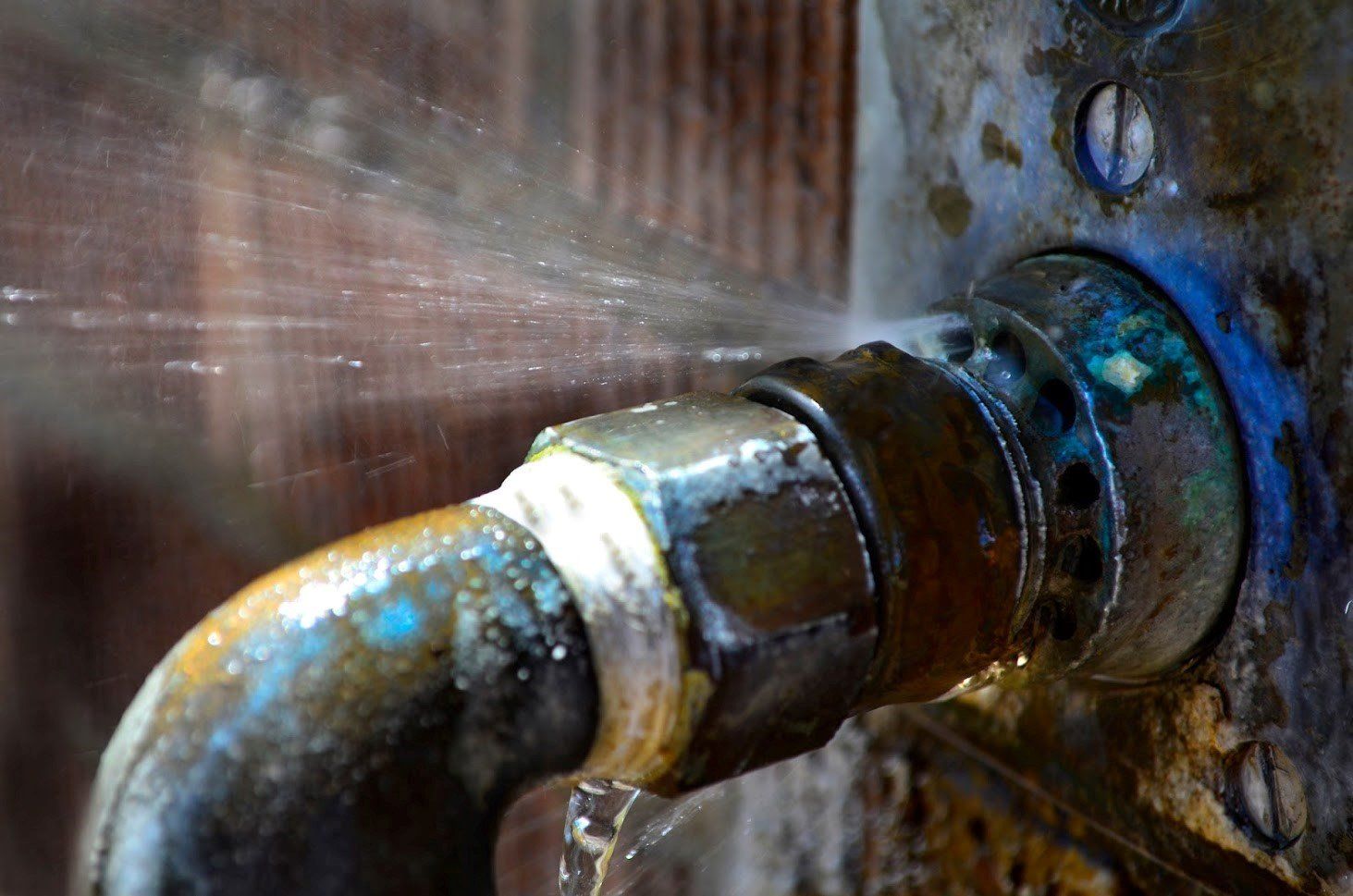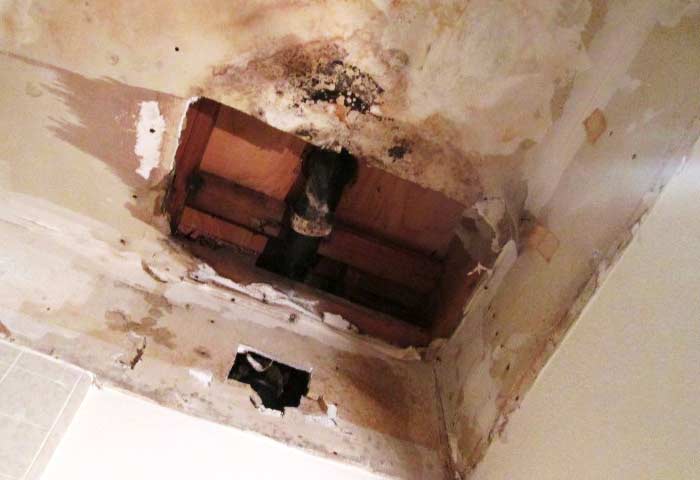What're your opinions on Rules For Handling Water Damage?

What should you do if a water pipeline ruptureds in your home? The longer you wait, the much more severe the damage that can happen to your property. For these factors, you require to discover how to act in the event of a ruptured water pipeline.
Turn off the Main Waterline Shutoff
The first thing to do? Shut the shut-off shutoff. Look for the local shut-off shutoff to shut off the water in one particular area just. If you do not understand where the local shut-off shutoff is, opt for the main water line shutoff and also turn it off. This action will remove the water promptly in your whole house. Generally, the primary valve is found outside the residence beside the water meter. If it's not there, you can likewise find it in 2 places: in the cellar at eye degree or the 1st flooring on the ground. Usually, builders placed the shut-off valve generally ground level bathroom or appropriate beside it.
Call Water Damage Reconstruction Pros for Assistance
After shutting the water resource, call the experts for help. This scenario is not something you can do some DIY due to the fact that the pipes needed to be taken care of and there is a demand to deal with the various other damages to your property. Look for help from a respectable company providing 24/7 emergency solutions if you can not cope. With their professional aid, you can avoid a lot larger water damage consisting of distorted walls, loose floor tiles, or damaged frameworks. Don't take this issue gently as well as seek specialist support for your complete comfort and a legitimate solution.
File the Damage For Insurance policy
While you're waiting for the pros to get here, get some documentation of the damage triggered by the wayward pipeline. Do close-up shots of the harmed areas and valuables.
Restore Things That Can Be Saved
When you're done taking photos, take a look at the harmed things and also obtain one of the most important ones from the stack. Dry them off in a dry/warm area far from the broken location as well as try to maintain them as high as you can. Drag as much wetness as you can to the material so it can start to dry.
Begin the Drying Process
You need to start the drying out procedure asap. Luckily, the water from your waterlines is already clean so you don't need to fret about drain water. The flowing water might have disrupted the dust and debris in your carpetings and also floorboards. In this situation, put some gloves on as well as start some damage control. Use pails to dump out the water. Remove as much water as you can from the surface areas with old towels. Switch on an electric fan or open your home windows to promote air flow. These steps will accelerate to completely dry as well as deter mold and mildew as well as mold development.
Experts are the only people certified to examine properly and deal with the burs pipelines and succeeding damage. As always, pipelines don't simply all of a sudden burst out of heaven. They typically give quiet red flags like gurgling paint, water spots. Weird sounds in the plumbing, caving ceiling, moldy smell, or peeling wallpaper. Keep in mind of these indicators and do some safety nets so you can nip any kind of problems in the bud.
What should you do if a water pipe ruptureds in your house? For these factors, you require to discover how to act in the event of a ruptured water pipe. After closing the water source, call the specialists for help. With their professional assistance, you can prevent a lot larger water damage including deformed baseboards, loosened tiles, or damaged frameworks. Thankfully, the water from your waterlines is currently tidy so you don't have to fret concerning drain water.
How to Handle a Burst Pipe and Minimize Damage
Steps to Take Ahead of Time
If you own property in an area that experiences cold weather, you need to be aware of seasonal maintenance tasks that will help you protect your property as the weather changes each year. One of the most important steps is to winterize your pipes to ensure they won't freeze or burst when the temperature drops. This includes action items like insulating any exposed pipes, detaching garden hoses and covering outdoor faucets. If the weather gets cold enough, you may even consider leaving a faucet dripping or opening cabinet doors during the coldest parts of the day.
No matter how prepared you might be, accidents and emergencies still happen. You'd be wise to set up a savings account specifically for your property so you have a "rainy day" fund set aside for unexpected expenses. All homes—regardless of age, location or condition—will inevitably need some form of emergency repair.
Steps to Take for Frozen Pipes
A frozen pipe will not necessarily burst, so if you can catch a frozen pipe early on, you could save yourself a major headache. When your area experiences frigid temperatures, be sure to check your plumbing and keep an eye out for warning signs like faucets only releasing small amounts of water or toilets not refilling when flushed. If you do run into one of these issues, you're likely dealing with a frozen pipe.
If this happens, your first step should be to cut off the water supply to that section of the plumbing. Expanding and freezing water can quickly cause damage. Even if the water supply is shut off, you will likely still deal with some leaking from the water that defrosts after the pipe has thawed. Be prepared with a mop, bucket and/or towels to quickly soak up any excess water.
In order to thaw a frozen pipe, you can use a space heater, infrared or incandescent heat lamp, or even a hairdryer to warm up the frozen area. Heat tape is also an option and should be used according to manufacturer instructions. Do not use any sort of open flame to thaw frozen pipes, as it poses a major fire hazard and can damage your pipes further.
Steps to Take for a Burst Pipe
Water damage claims are the second most common insurance claim in the U.S. When you're dealing with a frozen pipe, the water continues to expand as it freezes, which creates pressure that can cause a pipe to burst. When this happens, the crack or leak in the pipe allows water flow from the pipe to enter your home where it shouldn't. If a pipe does burst, you need to act quickly to mitigate property damage and repair cost.
Your very first step should be to shut off your main water supply to minimize flooding—typically the most expensive damage to address. Once you've shut off the water supply, make sure you identify the entire area that has been impacted by the leak. Remove as much water as possible—as quickly as possible—using a mop, sponges, towels or a shop vacuum or wet/dry vacuum. To prevent long-term damage due to moisture build-up, run a dehumidifier or fan in the affected area. Contact a licensed plumber to ensure the pipe is correctly repaired before running any water to that section of the home again. Burst pipes and the associated water damage are something you absolutely want to avoid as a property owner. If you've had to learn your lesson the hard way, don't let yourself get caught in a similar situation during the next spell of cold weather. The best way to deal with frozen or burst pipes is to prevent them in the first place—proactive winter maintenance will save you time, money and a whole lot of stress.

As a reader on Water Damage: Tips On What To Do When Your House Is Flooded, I imagined sharing that piece of content was a good idea. Do you know somebody who is enthusiastic about Water Damage Restoration Do’s And Don’t? Feel free to promote it. I cherish reading our article about The Do’s And Don’ts After Water Damage.
 Rick Moranis Then & Now!
Rick Moranis Then & Now! Marla Sokoloff Then & Now!
Marla Sokoloff Then & Now! Phoebe Cates Then & Now!
Phoebe Cates Then & Now! Traci Lords Then & Now!
Traci Lords Then & Now! Morgan Fairchild Then & Now!
Morgan Fairchild Then & Now!